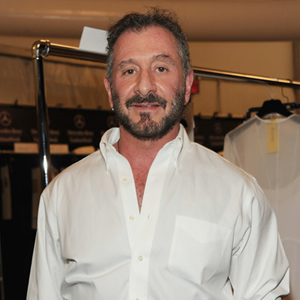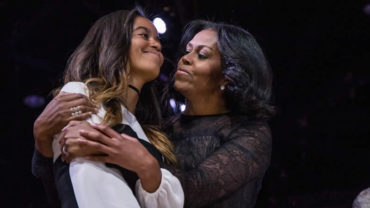According to a company statement, the designer is leaving “to pursue other creative endeavors,” although the firm did not say what those endeavors are or why Rucci decided to suddenly exit. “We recognize the contribution, vision and talent of Mr. Rucci, and wish him well,” said Joey Laurenti, Ralph Rucci LLC’s chief executive officer, who declined further comment.
A new creative director will be named before the end of the year. The pre-fall and fall 2015 collections will be designed by the in-house team, and the first collection by the new talent will be for resort 2016.
Whether the house can survive without its founding designer will be the question facing customers and retailers alike. Rucci has repeatedly attempted to grow his company, several years ago bringing in Jeffry Aronsson as ceo, and an investor to open stores and sign licensing deals. He even tapped Steven Meisel to shoot his first major advertising campaign, which was unusually edgy for a designer equated with chic minimalism. But while Rucci has long had a loyal following, he has often struggled financially, at one point severely reducing the staff at his fashion house.
“I have great expectations for the future,” Rucci told WWD. “I can’t wait to take the next step, and I wish everyone at the company well.”
The new management has been vocal about planned expansion for the brand, at wholesale domestically and internationally as well as eventual freestanding Ralph Rucci retail units. The idea, Nancy Marks said in the past, is to turn Rucci “into an accessible, modern, American fashion brand.”
The notion of accessibility could well have been at odds with Rucci’s uncompromising belief in luxury and the refined, discreet aesthetic that has been embraced by retailers such as Neiman Marcus, whose former fashion director Joan Kaner was an early champion of the designer’s work. That unwillingness to compromise also may have hindered the ablity of his company to expand its appeal to a broader base of consumers.
Rucci made a name for himself with sophisticated, highly detailed clothes embraced by women as diverse as Deeda Blair, Patti Smith, Martha Stewart and Whoopi Goldberg.
The common thread has been “cut, cut, cut and finding ways to make clothes in new ways, so a woman becomes empowered and not decorated,” he explained in a 2011 interview. “I detest decoration. That’s why I detest superfluous effects of clothes. My clothes are not minimal, but they came, I suppose, from a minimal birth. “My clothes are not architectural,” he added. “I detest when that word is used. They are biomorphic. We follow the lines of the body, and that’s why they become much more sensual.”
He had several inspirations and mentors along the way, including Balenciaga, Pauline de Rothschild, Halston, Elsa Peretti, James Galanos and Hubert de Givenchy.
In a rare feat, he became the only American designer besides Mainbocher to be accepted by the Chambre Syndicale de la Haute Couture to show haute couture collections under his own label in Paris. He unveiled his first couture collection in a hotel particulier on Place Vendôme in 2002, and after showing in the French fashion capital for several seasons, stopped showing there.
“Chado” was dropped from the label last year. Rucci’s New York Fashion Week shows often were intentionally slow in pace to show off the detail of the clothes. More recently, he preferred to show in his West 26th Street atelier, where the full workroom and its staff were on complete view to the audience, further highlighting the idea of craftsmanship. His was typically the only show of the week where individual exits received applause from the audience. In his most recent collection for spring – his last -he noticeably veered younger and more fun than in the past, with such looks as a short skirt and tank in which layers of dangling paillettes created a tortoise-shell effect, and a mohair smoking jacket that was sensually accented with tulle at the sides and sleeves.
Most recently, he has looked beyond just designing. He launched a furniture collection with Holly Hunt in 2012, and earlier this year, wrote the prologue to the book accompanying the “Charles James: Beyond Fashion” exhibition at the Metropolitan Museum of Art. It’s likely the designer will increasingly focus on his artistic endeavors in the future. He is also an accomplished painter, who has found inspiration in artists like Cy Twombly, Joseph Beuys, Alberto Giacometti and Robert Motherwell for his collections.






